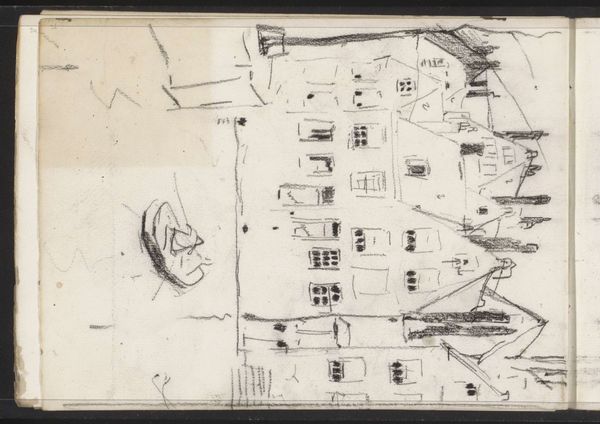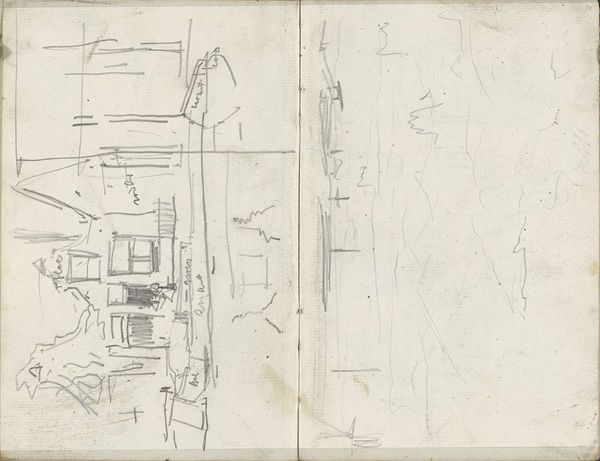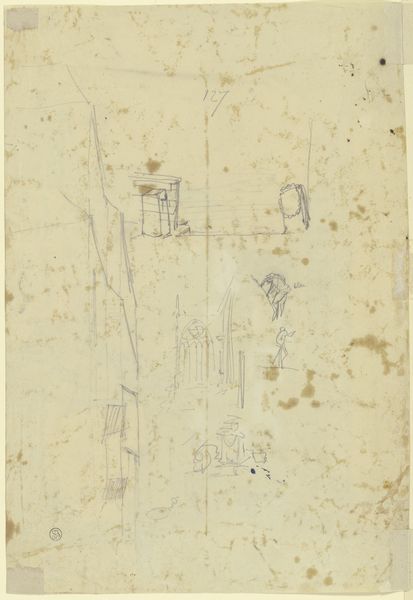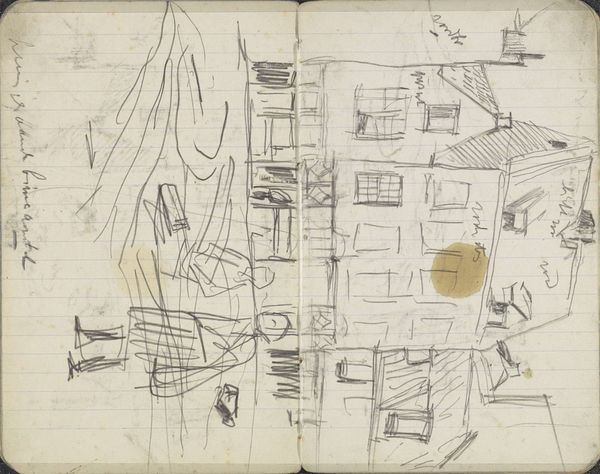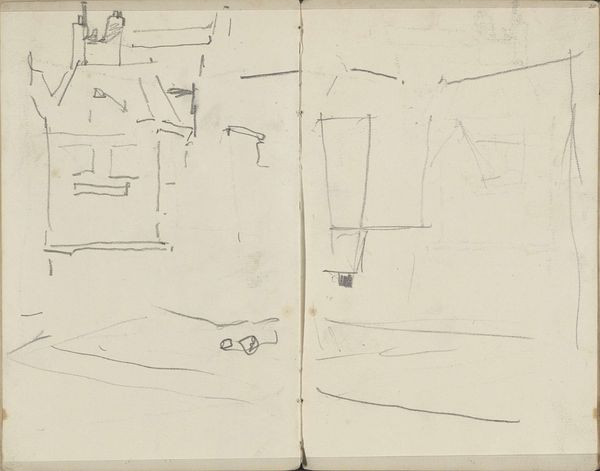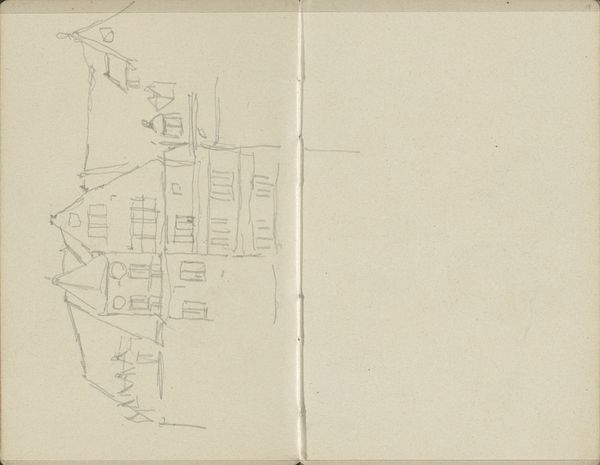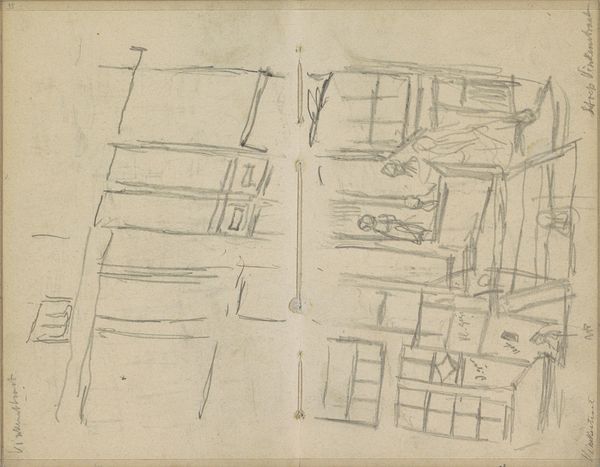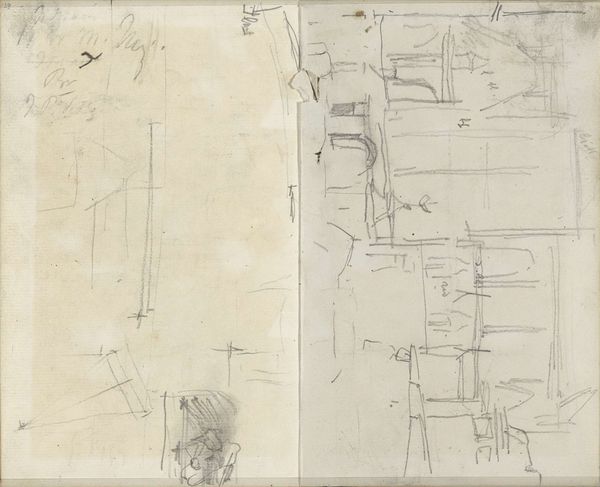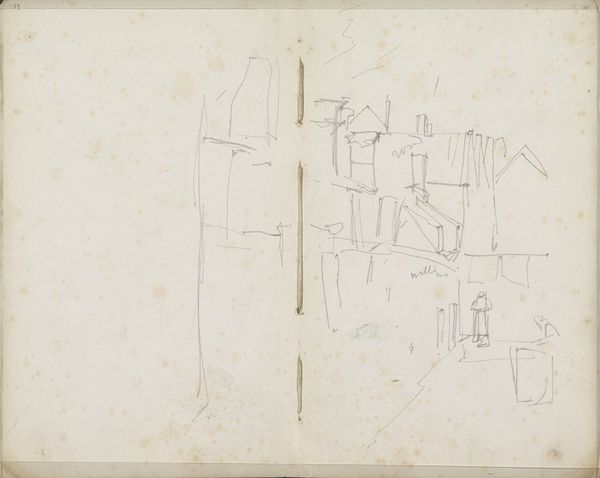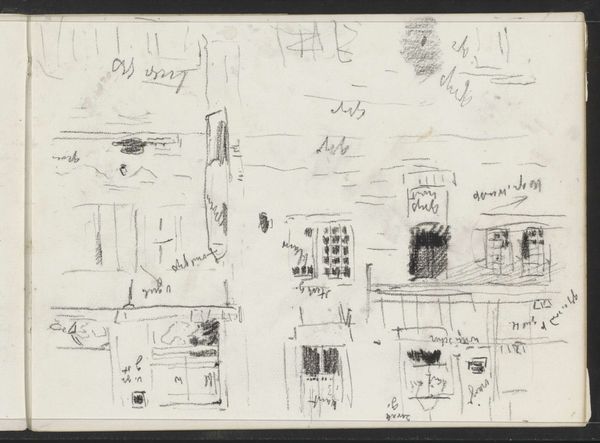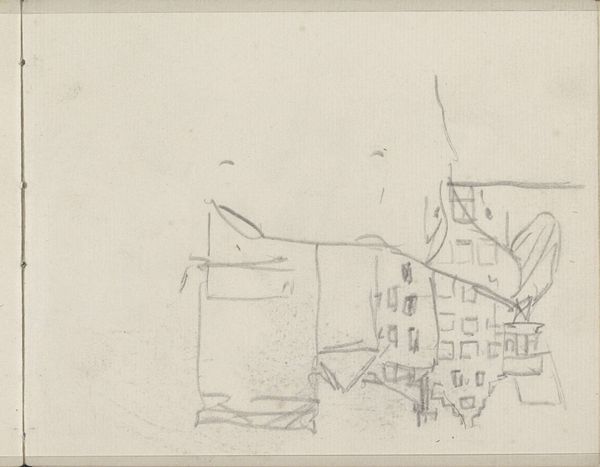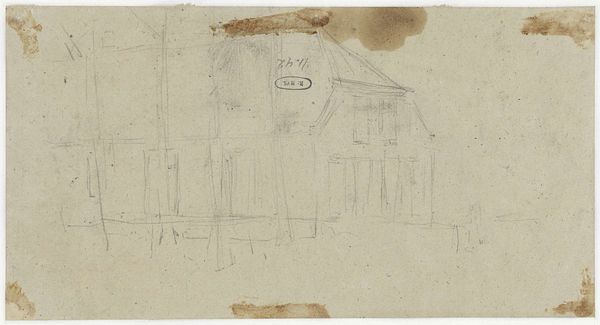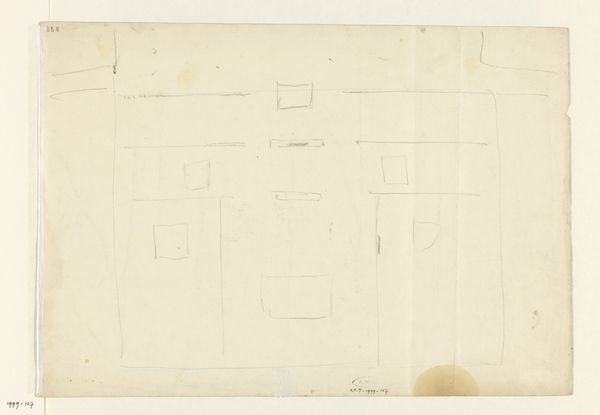
Dimensions: support: 113 x 175 mm
Copyright: CC-BY-NC-ND 4.0 DEED, Photo: Tate
Curator: Looking at this sketch, I immediately sense a bustling atmosphere, even though it's rendered with such delicate lines. Editor: This is "Street in Falaise," a 19th-century pencil sketch from the British (?) School, part of the Tate collection. These fleeting glimpses of everyday life can tell us a great deal about the social fabric of the time. Curator: Absolutely, and the quick strokes capture the transient nature of urban life, right? It’s almost a snapshot, hinting at social interactions, the architecture reflecting class structures, and the very act of sketching, an expression of the artist's privilege to observe and record. Editor: Precisely. Consider the role of travel and tourism in the 19th century, fueling artistic documentation of places like Falaise. These images circulated, shaping perceptions and reinforcing narratives about specific locations. Curator: So, even a simple sketch becomes a powerful tool in constructing and disseminating cultural understanding. It’s more than just a street scene. Editor: Indeed, it opens a window into the complex interplay between art, society, and the politics of representation. Curator: Thank you for bringing these important perspectives to light! Editor: It's a pleasure to explore the multiple layers of meaning embedded within such seemingly modest works.
